In the heart of the White Mountains of New Hampshire, the mountain pass of Franconia Notch – bordered by the sheer face of 4,080-foot Canon Mountain to the west and 5,249-foot Mount Lafayette to the east – has become a rite of passage to many outdoorsmen and women. “Up in the mountains of New Hampshire, God Almighty has hung out a sign to show that there He makes men,” wrote statesman Daniel Webster (1782-1852) of Franconia Notch. American author, Nathaniel Hawthorne, saw the mountainous formations “as if a mighty angel were sitting among the hills, and enrobing himself in a cloud-vesture of gold and purple.” As the natural majesty struck these men, so it too struck Soren West when he first visited the area as a boy.
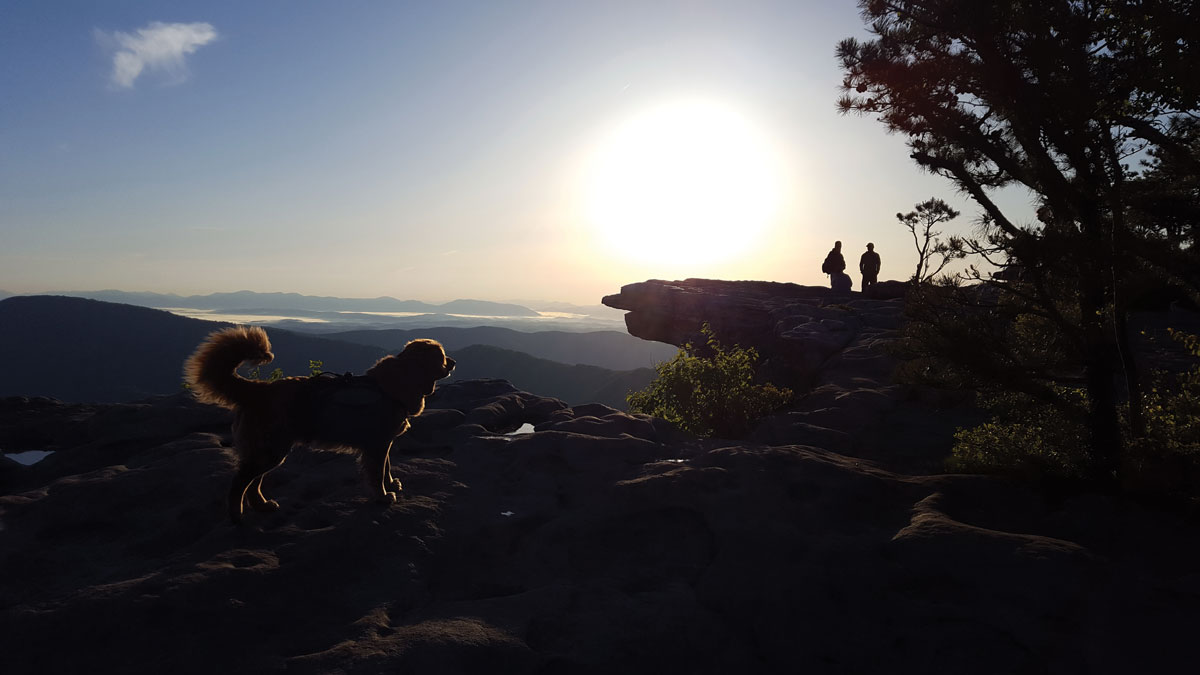
May 14: Sunrise at McFee Knob in Catawba, Virginia. This is regarded as one of the most iconic overlooks on the AT.
A lifetime later, the retired lawyer from Lancaster would revisit The Granite State. Worn from months in the wilderness and in the company of his sole companion, a golden retriever named Theo, Soren would turn his face to the howling wind and unleash a guttural cry to the heavens, proclaiming he had returned and crested the mountain ridges surrounding Franconia Notch at age 75.
A Life’s Call to Nature
Soren grew up in the suburbs of New York City – close enough to the Big Apple for his parents’ social and work lives, yet far enough removed in Fairfield County, Connecticut, to know nature. His parents’ lifestyle enabled their alcoholism (and, eventually, 40 years of recovery); this preoccupation left Soren and his brother to discover the natural world around them on their own. “Mother Nature became mother for sure. It was a comforting place to be,” says Soren, who is quick to also credit the many advantages in life his parents gave him.
When he entered his high school years, Soren went off to Northfield Mount Hermon, a prep school in the well-forested lands of northern Massachusetts; the four challenging years exposed him to harsh New England winters. After graduation, he served as an exchange student in the UK, where he met Prince Phillip and witnessed the pageantry of British royalty. He went on to Yale, his father’s alma mater, where he studied English; considered joining the Peace Corps; married “a girl he met at a Yale mixer,” his wife Bonnie; and eventually went to work for his father in the insurance premium finance industry.
With a call to the unknown reverberating in him, he left the security of working under his father and took a teaching position at a prep school in Connecticut. “I was a little too serious as a teacher and a little too hard on the kids,” recalls Soren. “I really wasn’t enjoying myself, so I ended up going to law school.”
He and Bonnie – whose family hails from Lancaster County – had started a family and welcomed their second son (of an eventual five children) during Soren’s time at law school. Upon graduation, he took a job in Monroe County for a short time until he was offered a position in Lancaster, where he began a 46-year career as a trial attorney.
The memory of his experiences in nature stuck with him his entire life. Soren fondly recalls the years of 6 through 13 when he went away to summer camps. His last three camp summers were spent at New Hampshire’s legendary Camp Idlewild on Lake Winnipesaukee’s Cow Island.
“From there I became such a frequent hiker,” says Soren, and he starts naming the New England peaks he has ascended. “The experience of going over Franconia Ridge impressed me at the time, but it was just something I did as a kid. As the years went on, it was something that just kept resurfacing throughout my life. What a beautiful scene. It was something that just germinated inside of me.”
Onto the Trail
The Appalachian Trail, navigating the eastern United States from Georgia to Maine, follows part of the Franconia Ridge as it traverses an 89.5-mile stretch through the White Mountains National Forest. Most of this section of the AT is above the tree line and the climate is classified as alpine. The passage is only recommended for experienced adventurers.
As he writes in the introduction to his book, Soren took 10 years and hiked nearly 500 miles to prepare for his adventure on the AT. Officially designated as the Appalachian National Scenic Trail, but dubbed simply the AT by hikers, the 2,180-mile public footpath traverses “the scenic, wooded, pastoral, wild, and culturally resonant lands of the Appalachian Mountains” as described by the National Park Service, which shares stewardship of the trail with the US Forest Service, Appalachian Trail Conservancy, numerous state agencies and thousands of volunteers. The trail touches 14 states (including Pennsylvania) and was conceived in 1921, built by private citizens, and completed in 1937. More than 2,000 hikers attempt to thru-hike the trail in its entirety every year; one in four succeeds.
“Wanting to hike the AT had something to do with my experience on Franconia Ridge. I’m a romantic,” adds Soren. “I think of the romantic as a person who needs something out there beyond. The romantic needs to discover the unexpected. I wanted to march into the unknown.”
Soren – who took the trail name of Sojo, short for Sojourner – set out from Springer Mountain in Georgia’s Chattahoochee National Forest on February 21, 2016. At age 74, he was the oldest thru-hiker that year and his loyal dog, Theo, was a spry 8 years old. He set out onto the trail a motivated and ready man.
Hiking through most of the South proved rather effortless, but north of Roanoke, Virginia, just after passing the picture-perfect, Instagram-inspiring McAfee Knob, near the small town of Catawba, Soren’s body started to give up. He was exhausted and he had no idea why. For motivation, he turned to a motto he developed while training: recoup, regroup, and return. After putting things in perspective, he journeyed on.
On June 4, close to the physical halfway point of the AT, Soren pulled off the trail near Middletown, Virginia, long enough to mark his 75th birthday with 14 family members who joined with him to celebrate. Pulling off the trail is nothing peculiar. About every six or seven days thru-hikers will come to a small town or rest area near the trail where they can replenish their supplies, do laundry and shower – which is much needed says Soren. This day, when hikers log 0 miles, is known as “zero day.”
“At age 75 I had a lot more leisure. And, I found that a real benefit,” says Soren, recalling his more relaxed pace on the trail compared to other hikers. His tempo allowed him to compile more than 23,000 photos during the journey.
Some thru-hikers plan out each stop along the AT and even mail supplies ahead of them to the post offices they will visit on their zero days. Soren was not so fastidious; he developed an ability to shop for what he needed along the way and repackage most of his goods for the trail. For example, he would transfer jelly – a luxury he insisted upon – from its glass jar into a lighter, plastic container.
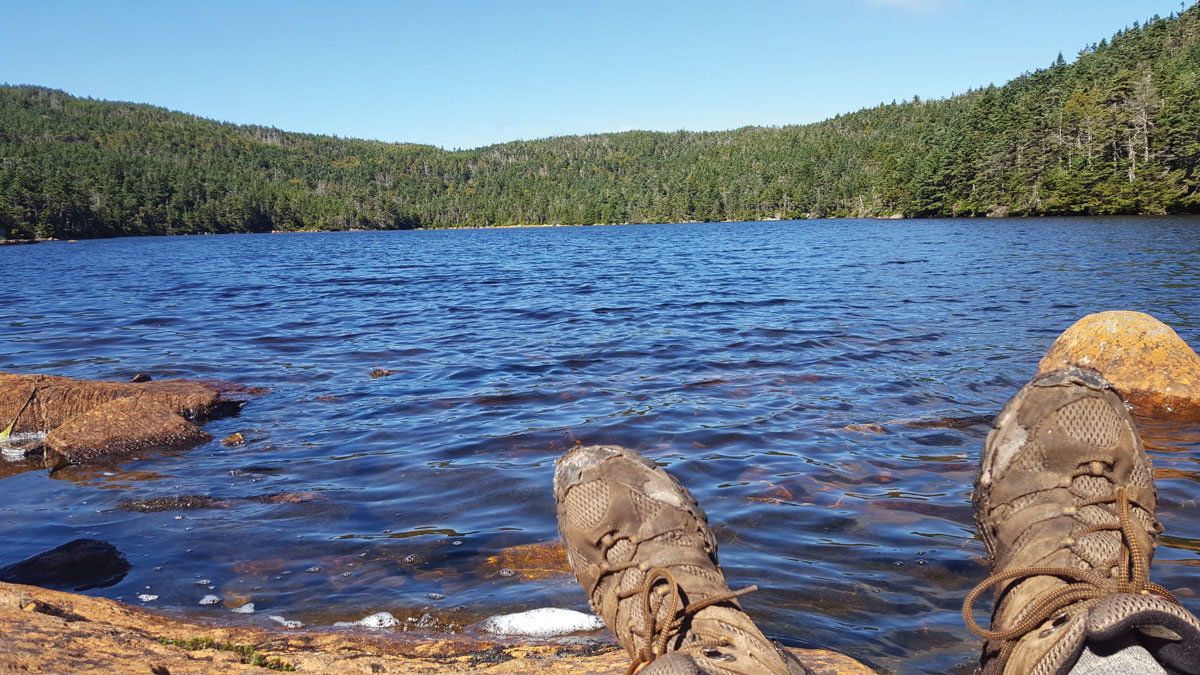
Speck Pond, Maine, after hiking through the most difficult and dangerous mile on the trail, Mahoosuc Notch. Soren’s boots needed rest and repair.
Zero days also serve as social respites from the mental fatigue a thru-hiker can experience after being alone in the wilderness. Soren was never alone and considers himself fortunate to have had Theo as a trail-mate. He never had a desperate feeling urging him to quit, which he credits to his faithful family and his four-legged friend.
But, alas, Pennsylvania. Named by most thru-hikers as the least favorite of all states included on the AT, Pennsylvania is rocky, rough and sometimes called “the graveyard of paws and boots.” Soren’s feet were already hurting from a necessary boot change in Virginia and while in his home state he wondered if he could finish the hike without inflicting permanent, physical harm on his body. He rested. And then, he pressed on.
The Final Stretch
Nearing Franconia Notch, Soren was met on the trail by two of his grandchildren and his son, Christopher. Clouds swept in and out along the ridge, visibility went from zero to limitless in minutes. It was by far the most extraordinary part of the hike for Soren, but the White Mountains were not his ally. By the time he got to Maine, he was running on fumes, he says.

June 4: A contingent of family members traveled to Middletown, Virginia, to join Soren in celebrating his 75th birthday.
Loneliness was starting to take over when he got a surprise visit from his son, Nathan. Hearing a bit of desperation in his father’s voice during a phone call, Nathan flew to Maine and started hiking south to meet up with his dad, who he found by following the sound of the old man’s laughter. Despite the friendly boost to his morale, Soren’s hardest decision was yet to come.
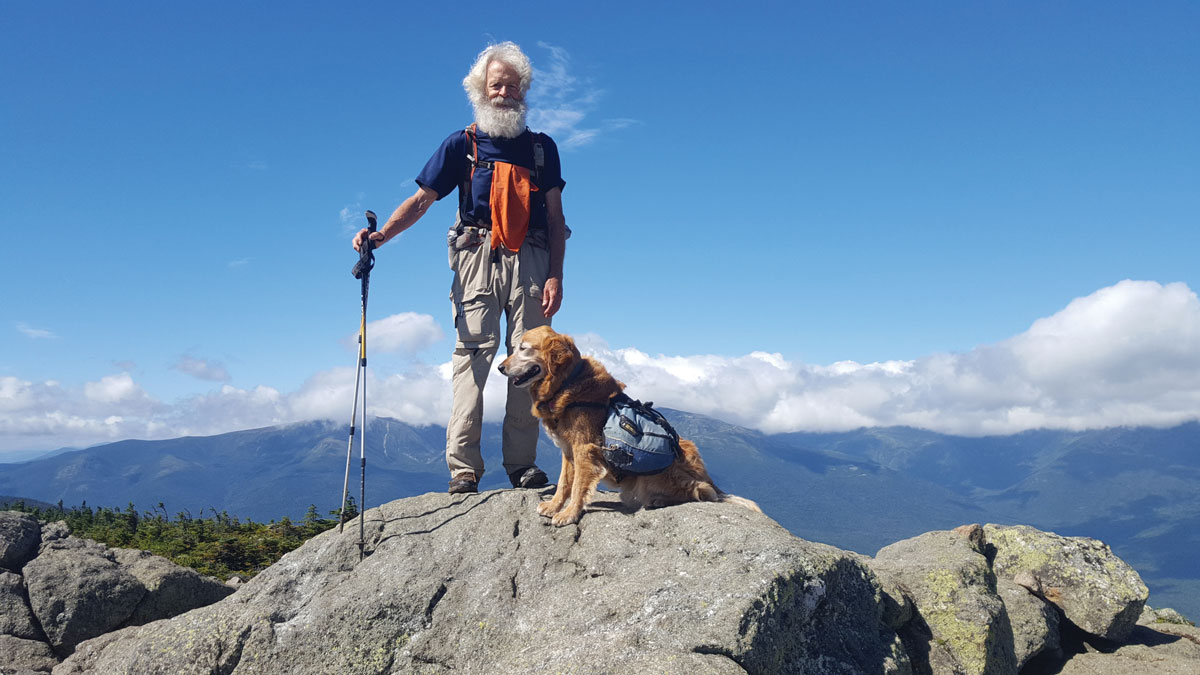
Mount Hight, elevation 4,675 feet, is part of the Carter-Moriah Range of the White Mountains of New Hampshire.
It was October and the days were getting shorter, the daily temps were getting colder and he was heading north toward the Hundred-Mile Wilderness. Along the trail Soren took several falls; once when catching his feet on rusted barbwire he knew he had done some damage to his rotator cuff when he met the ground. In Maine, pressing hard to make more miles and a double-digit day, the paced-hiker snagged his boot, which sent him to the chilled earth. The force from his face meeting a tree root impacted a tooth. An emergency trip to a dentist in Rangeley, Maine, fixed his tooth, but his right arm was nearly useless. A few miles north, the town of Munson marks the end of civilization before a 100-mile trek through rugged Maine wilderness to Baxter State Park, home of the 5,267-foot Mt. Katahdin.
“My shoulder was hot, swollen and sore, and I knew I had to have it checked,” says Soren, who ended up spending three days in a rural Maine hospital. Doctors suggested operating on the shoulder. Surgery would leave his arm in a sling for six months. “I reasoned and I felt better after an aspiration. They tried to convince me to give up the hike.”
But, glimpsing a forecast of the weather on Katahdin for the next three days, and knowing the seasonal closing of the state park was approaching, Soren decided to switch his direction. He ascended the mountain named after the Penobscot Native American word for The Greatest Mountain and then returned to finish his AT adventure by completing the Hundred-Mile Wilderness.
Soren got off the trail on October 27, 2016. The hike that fully captured his imagination took him 8 months and 6 days.
“My goal was just to fulfill something that had been in my crawl for 60 years,” says Soren, now sitting in the comfort of his West End home; he fully enjoys sharing his story of a man, a dog and a trail.
“The conclusion I have come to as to why I did it is because I had to. I simply had to.”
For more information about the Appalachian Trail, visit appalachiantrail.org.

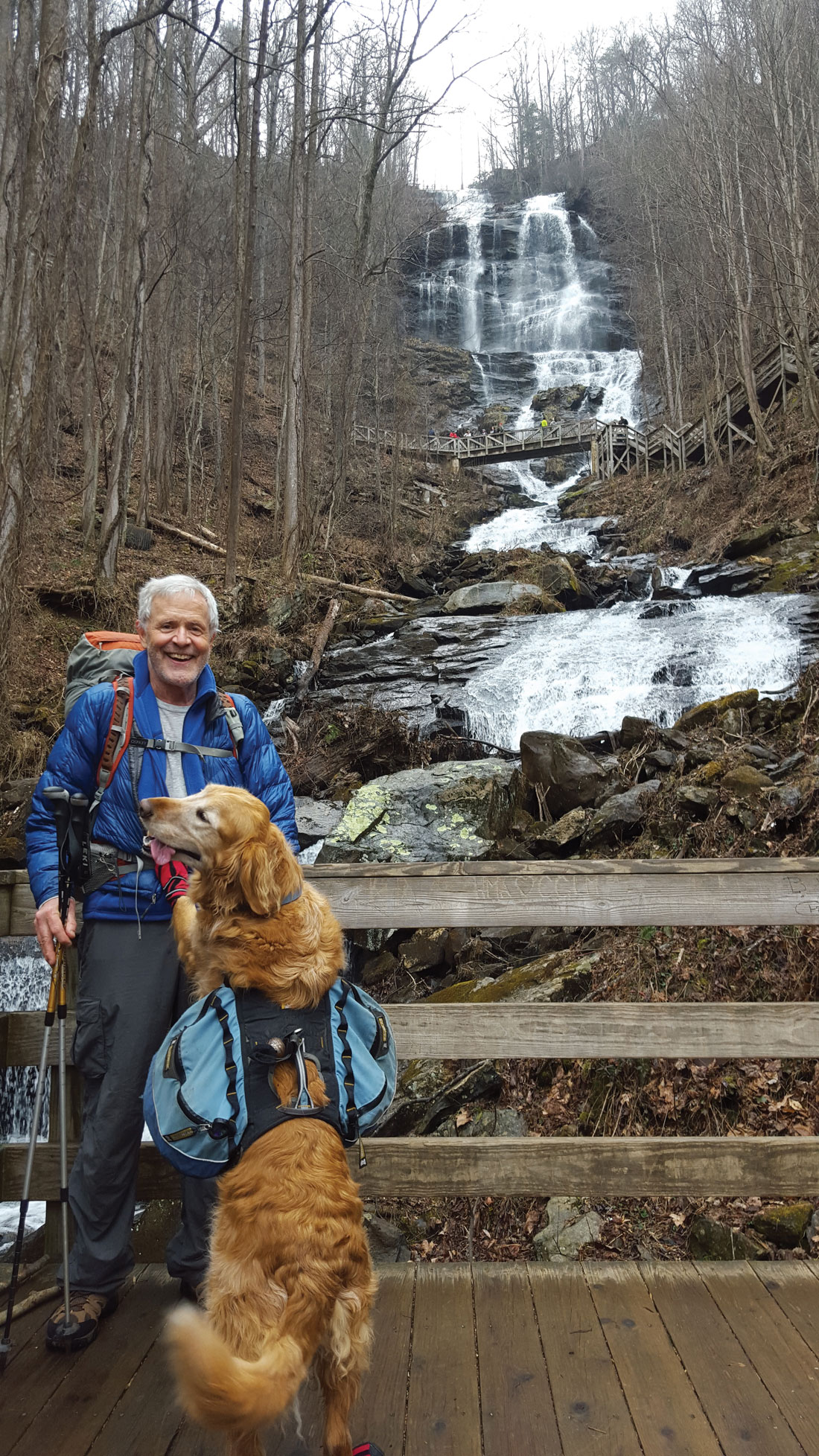
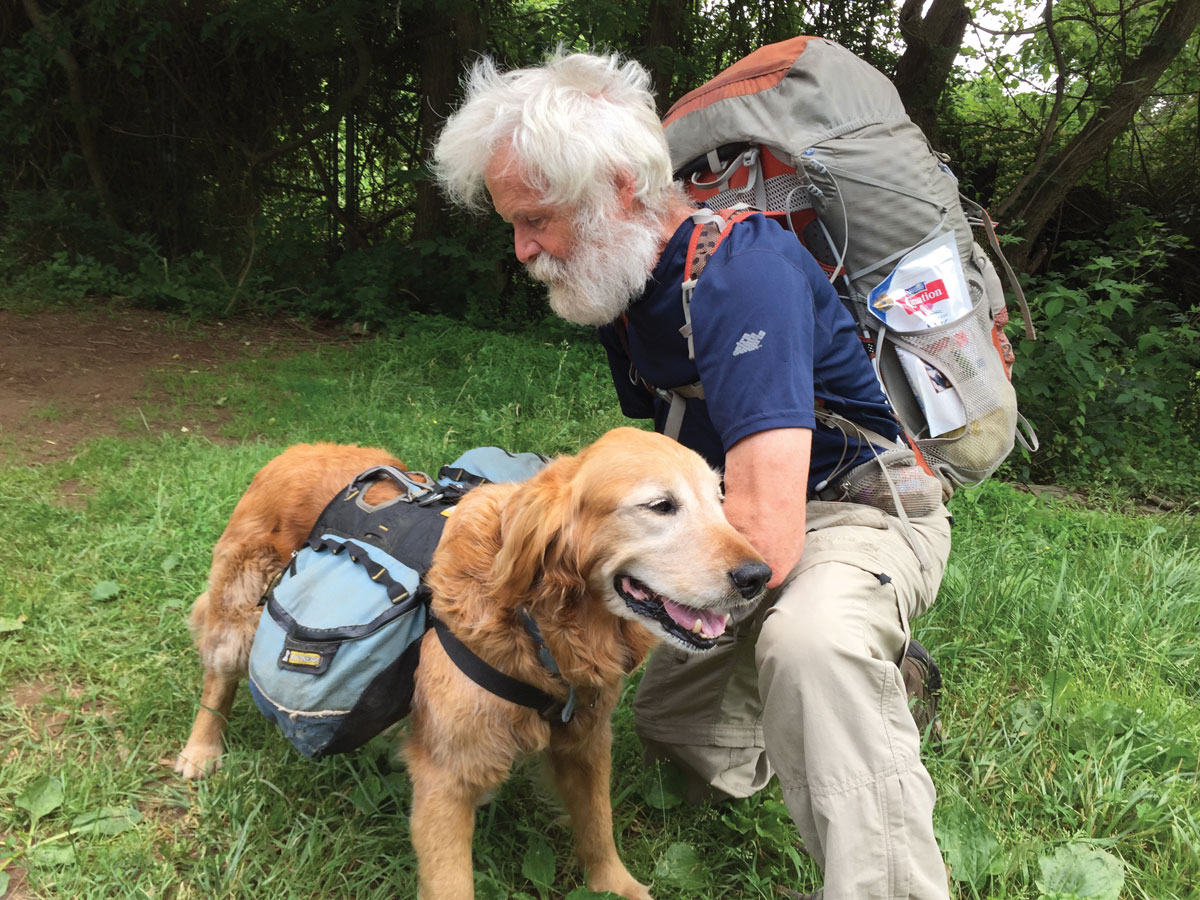
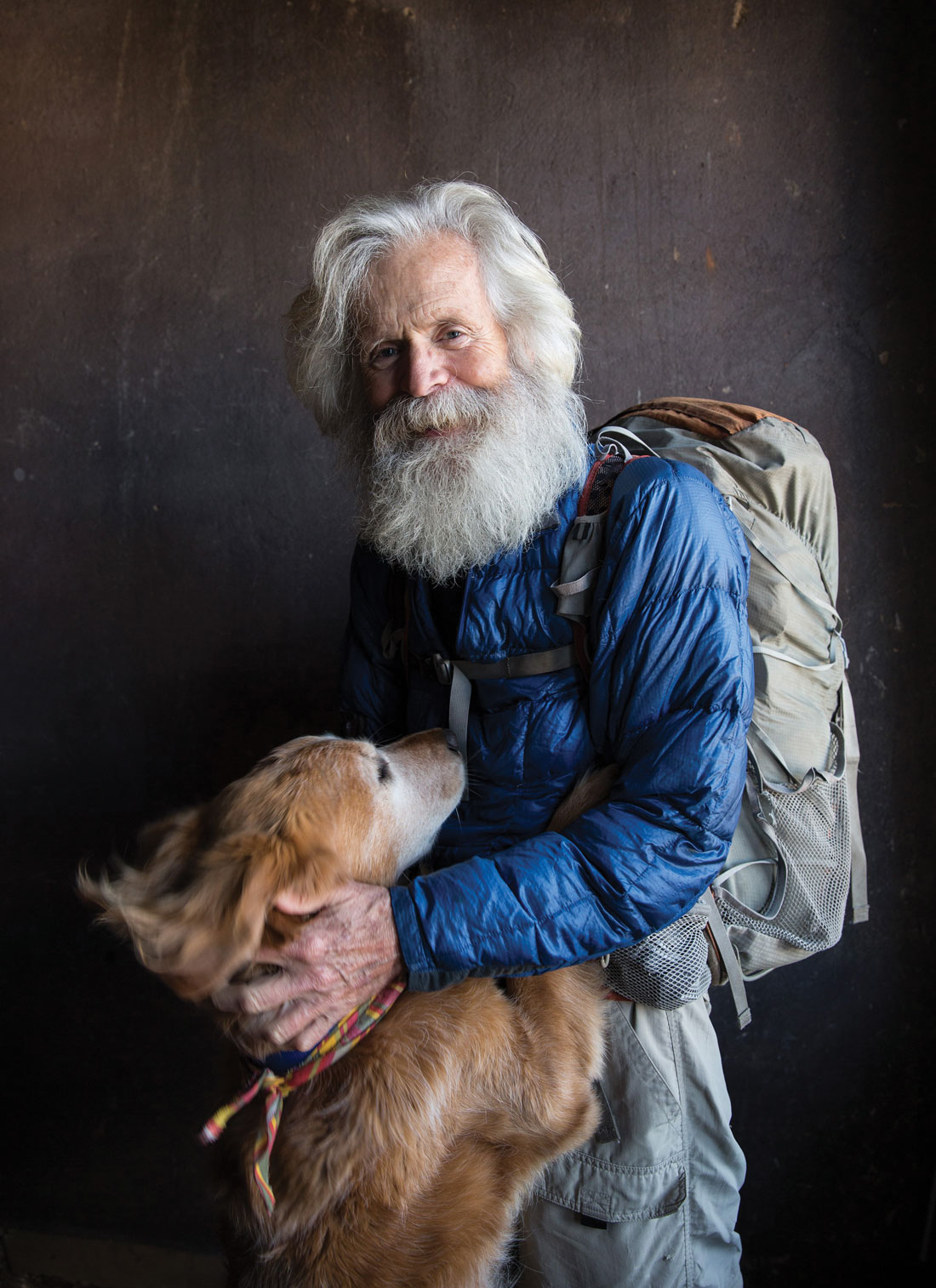
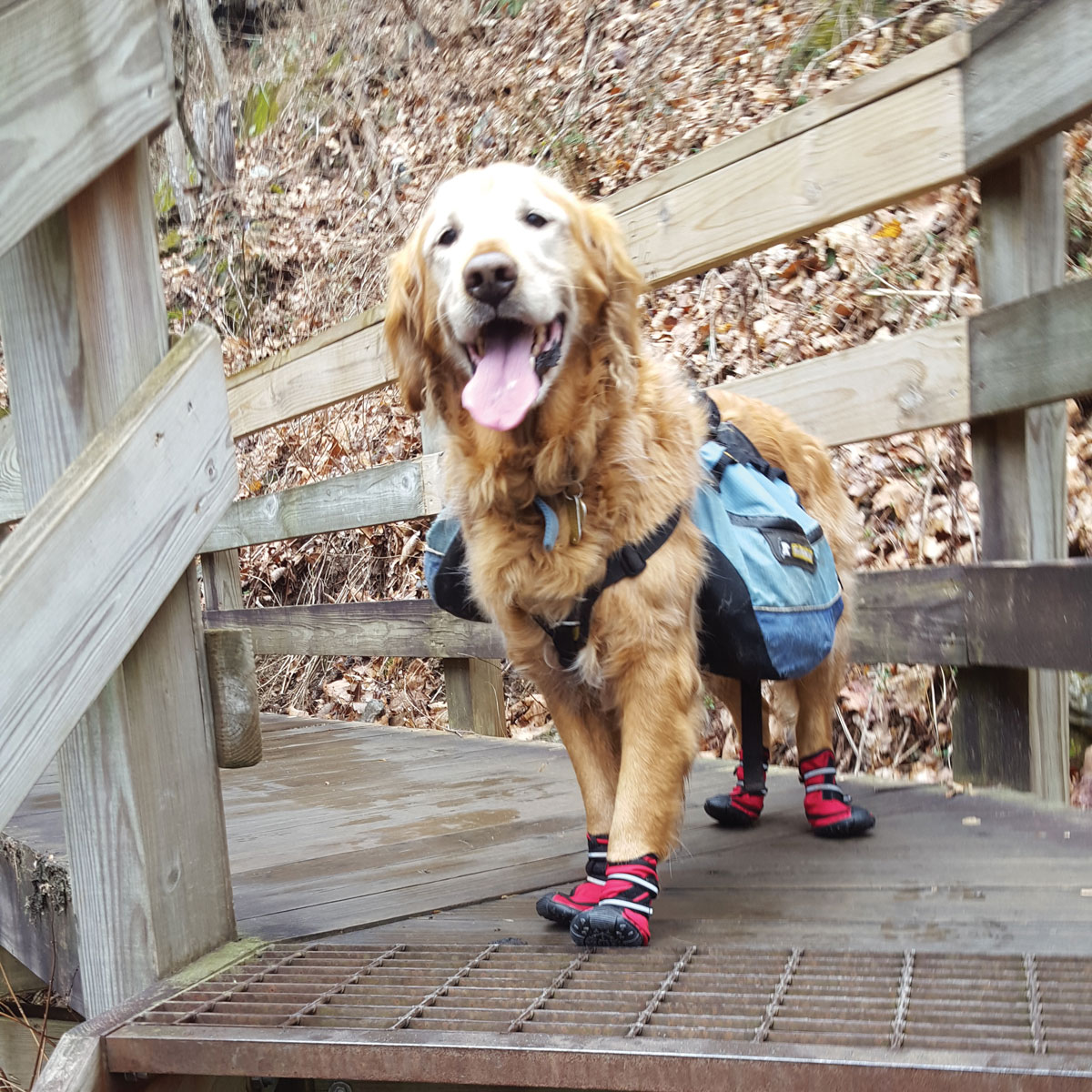
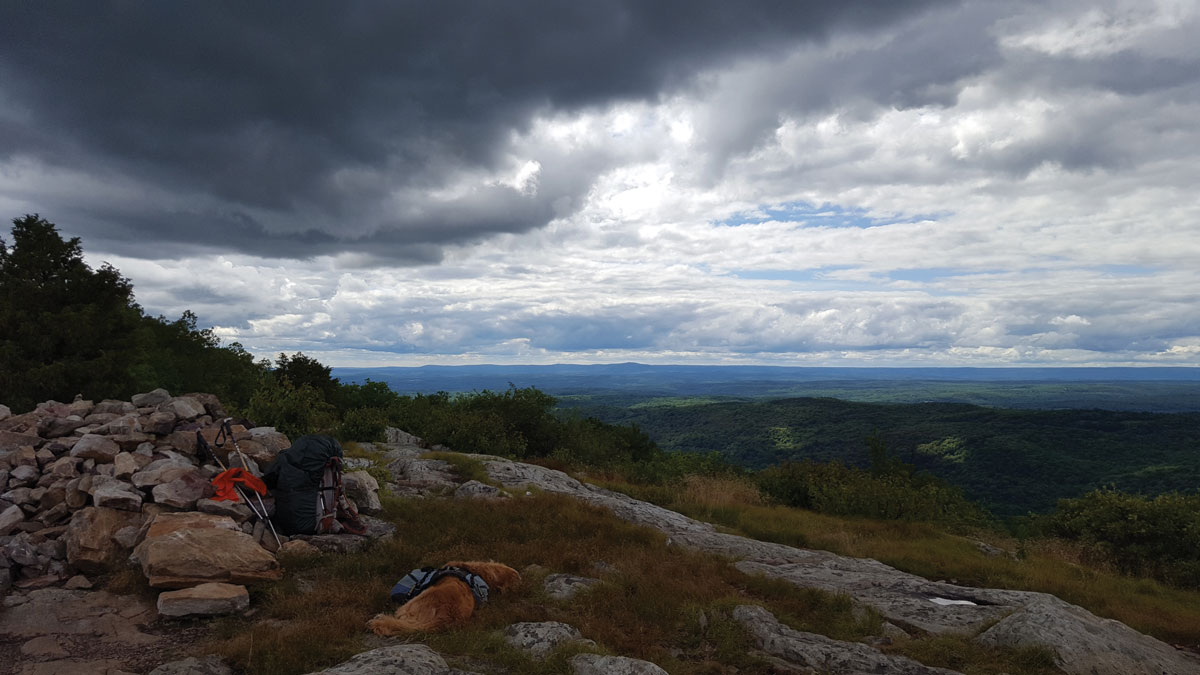
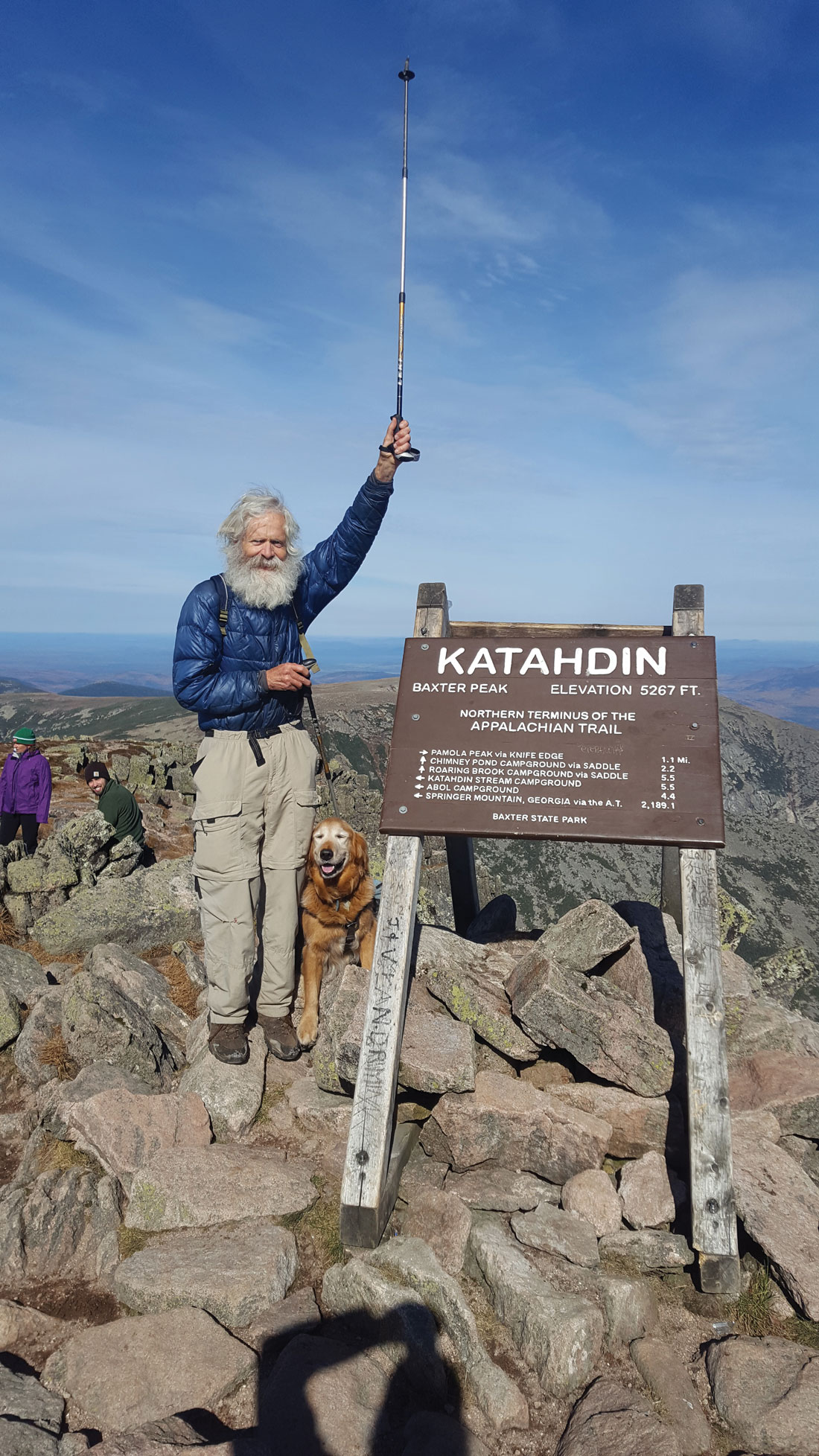
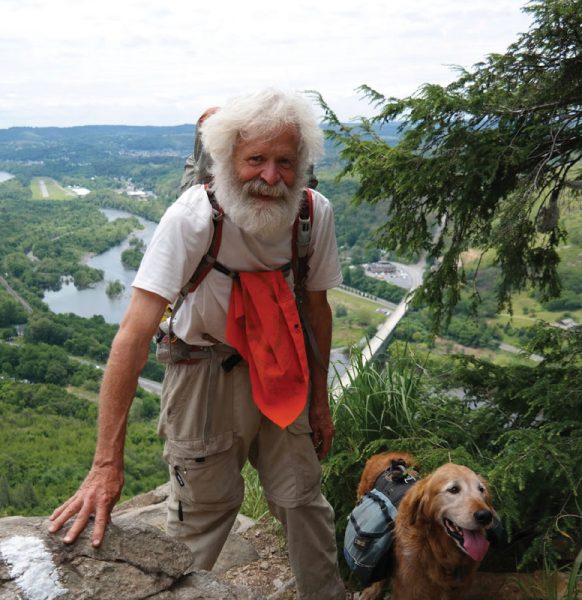
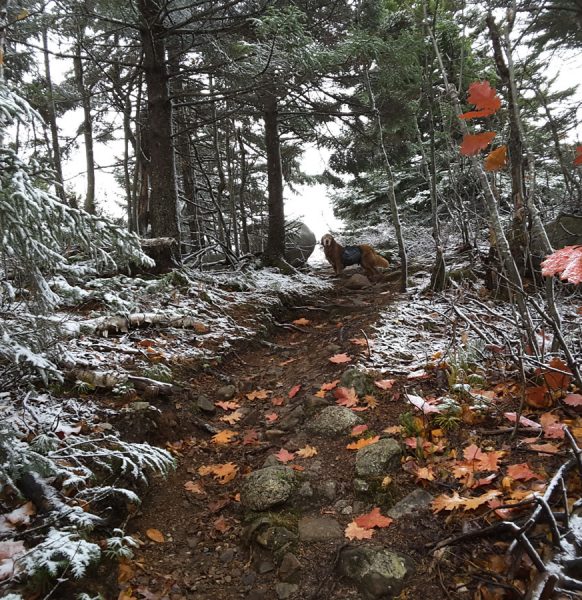
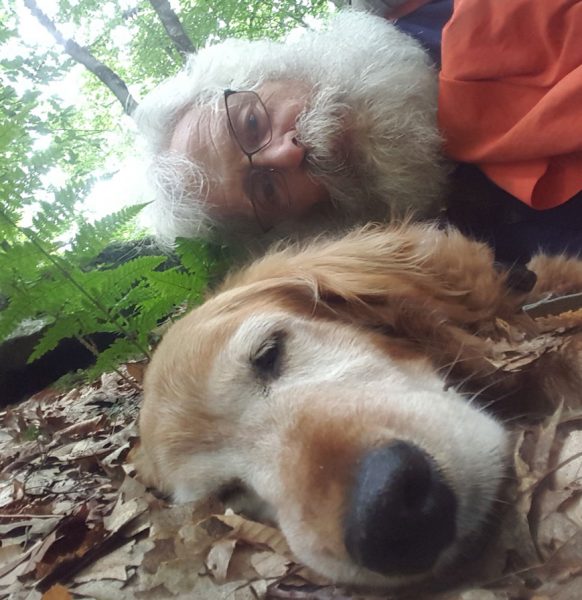
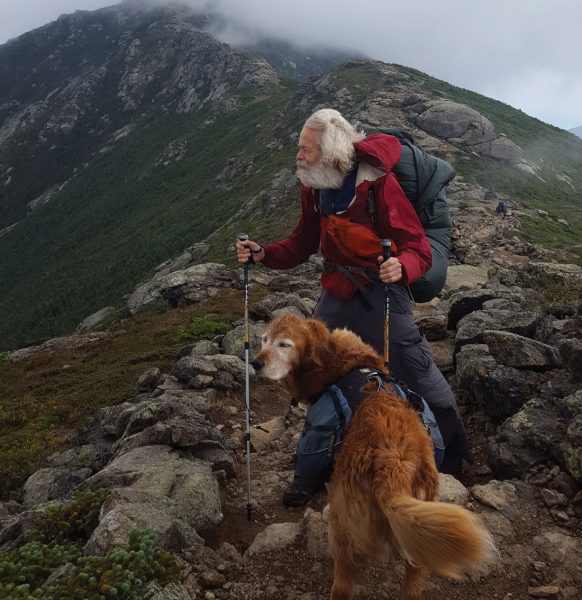
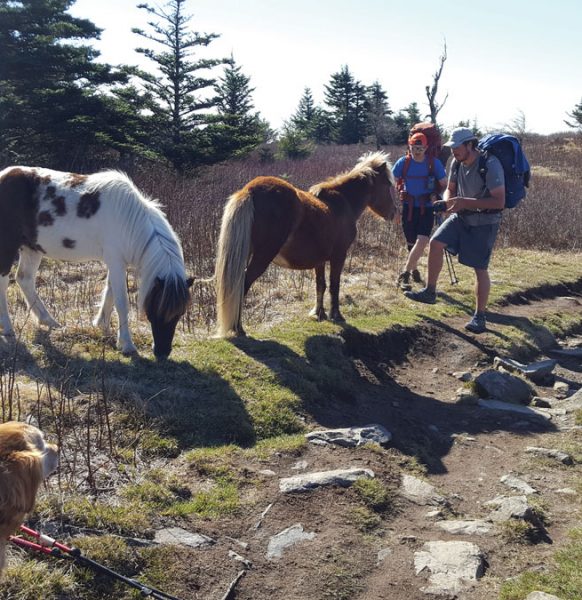
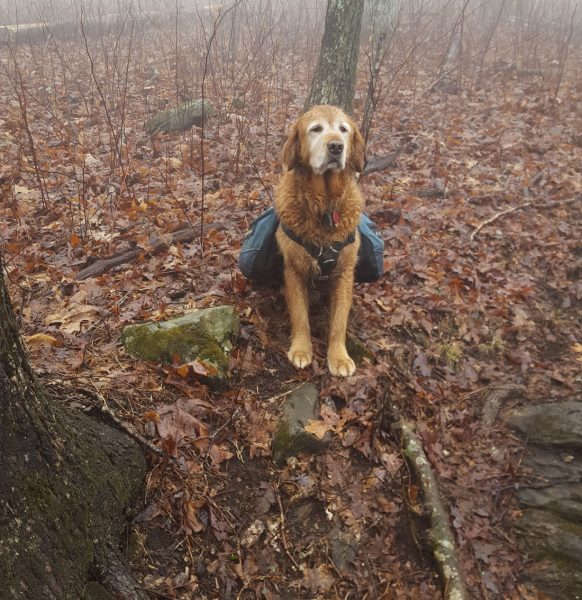
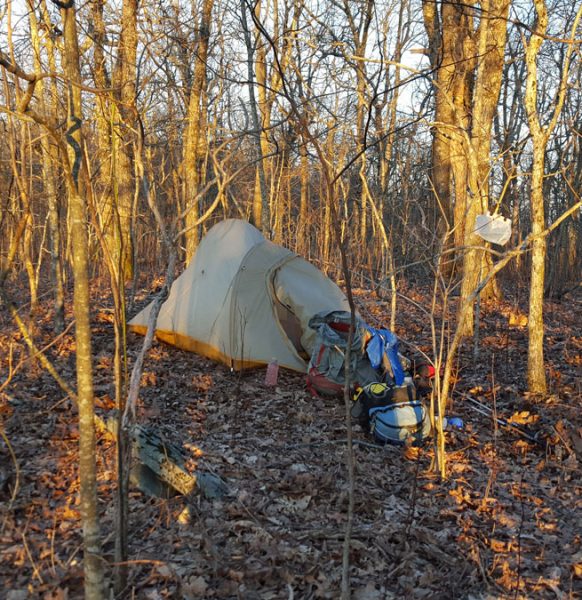

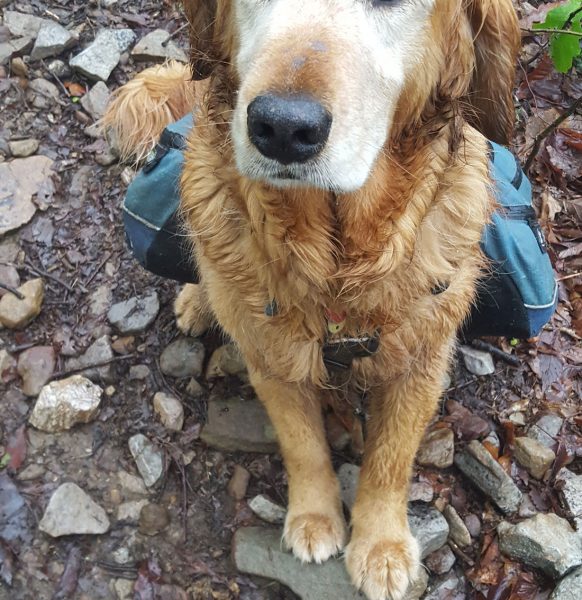
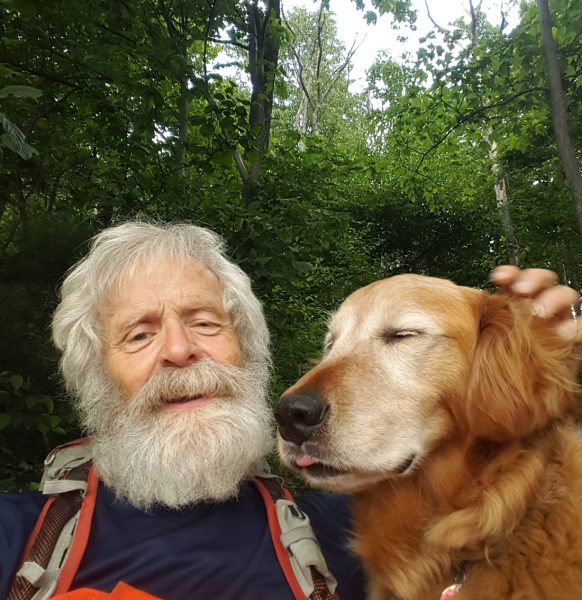
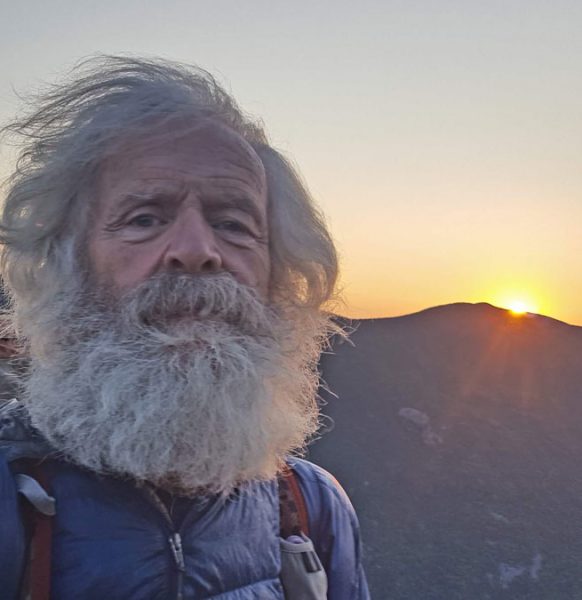
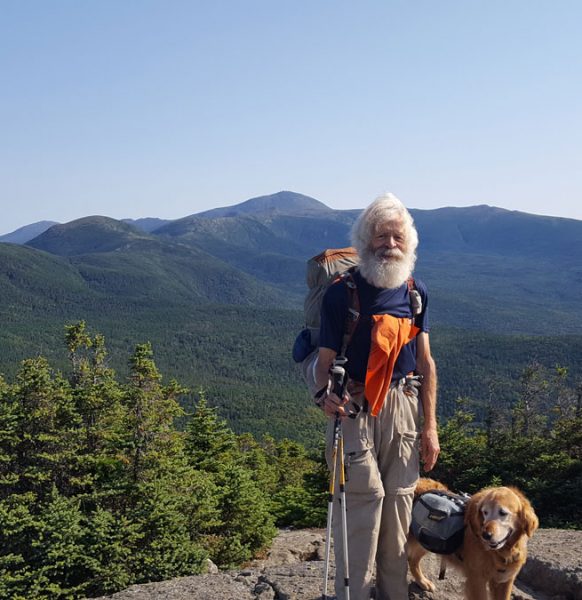
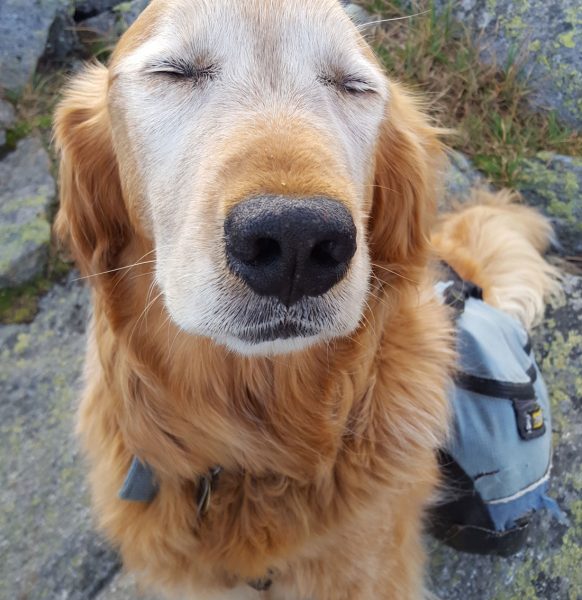
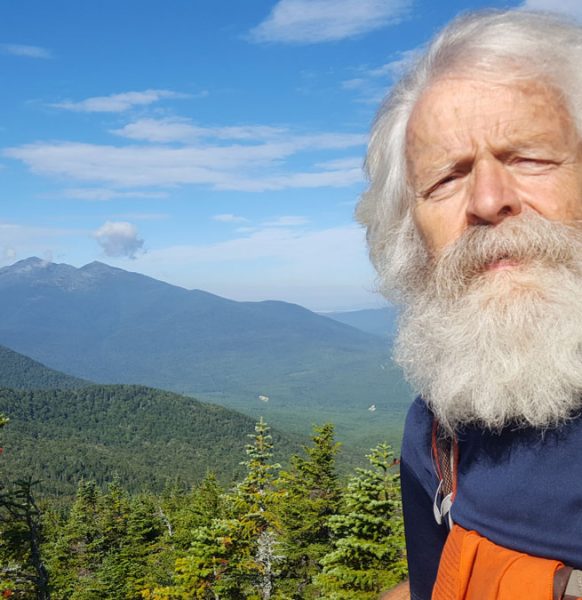
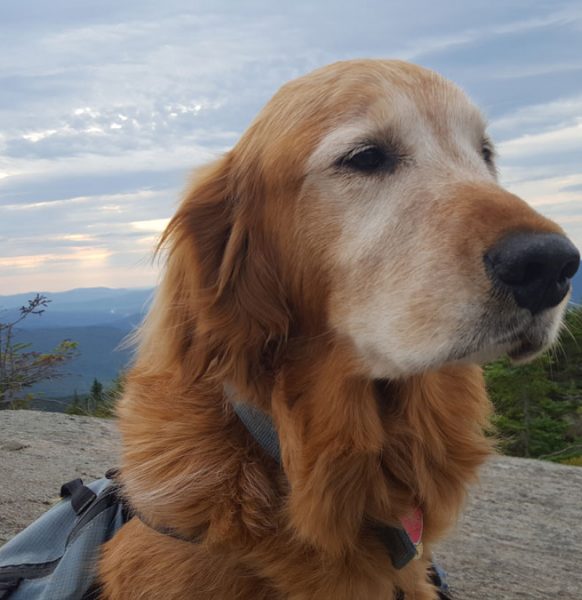
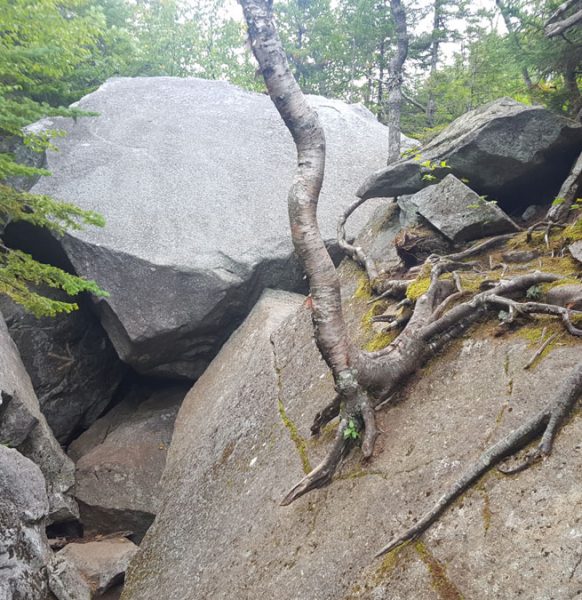
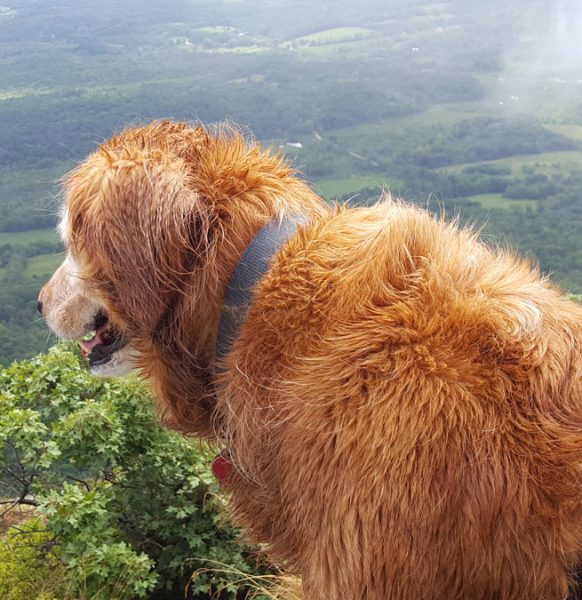
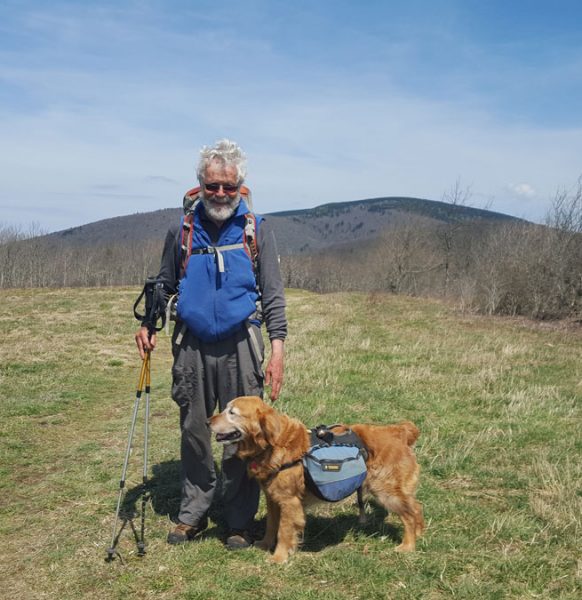
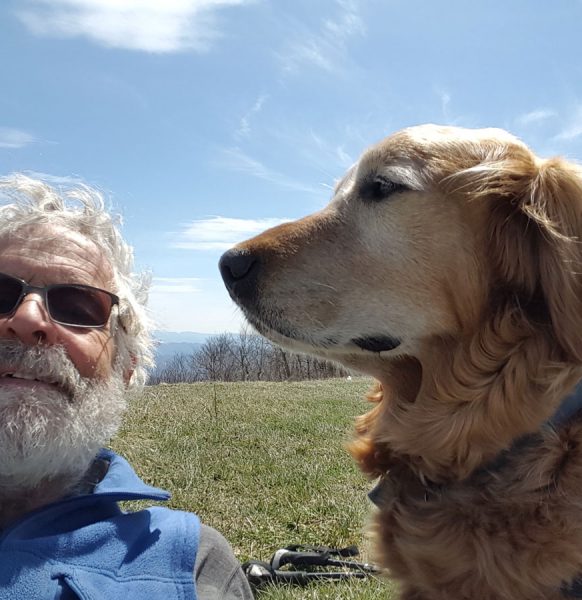

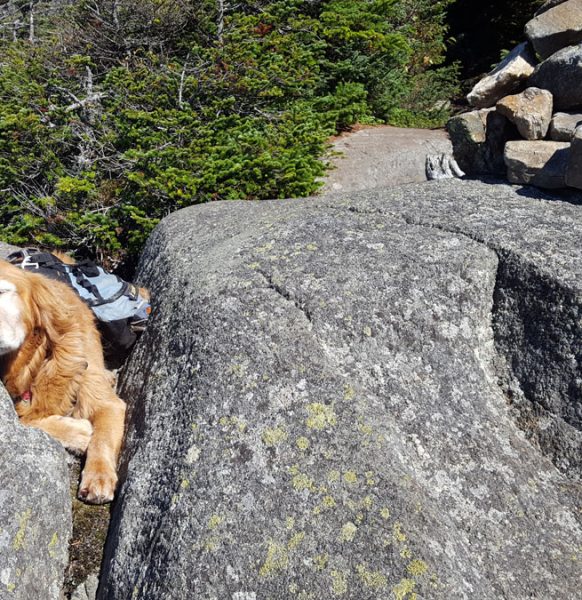
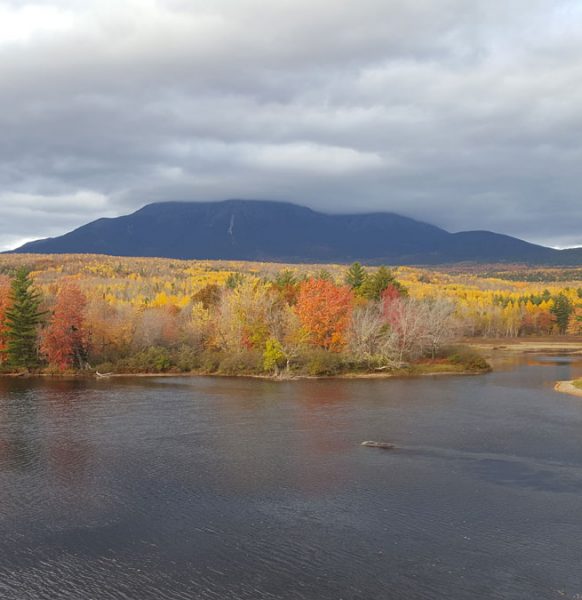
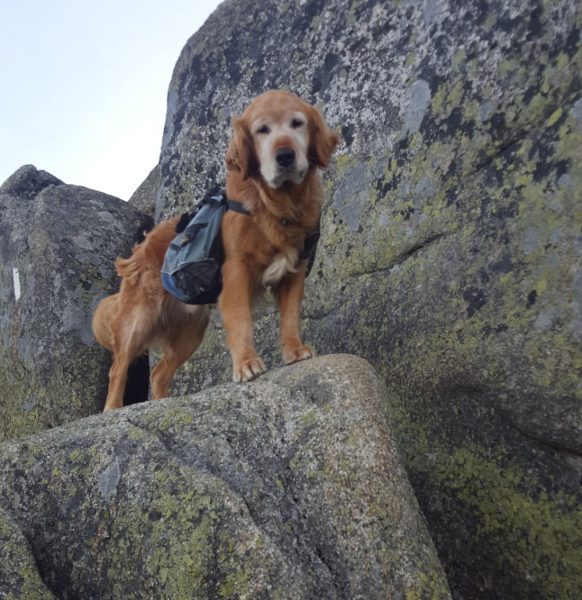
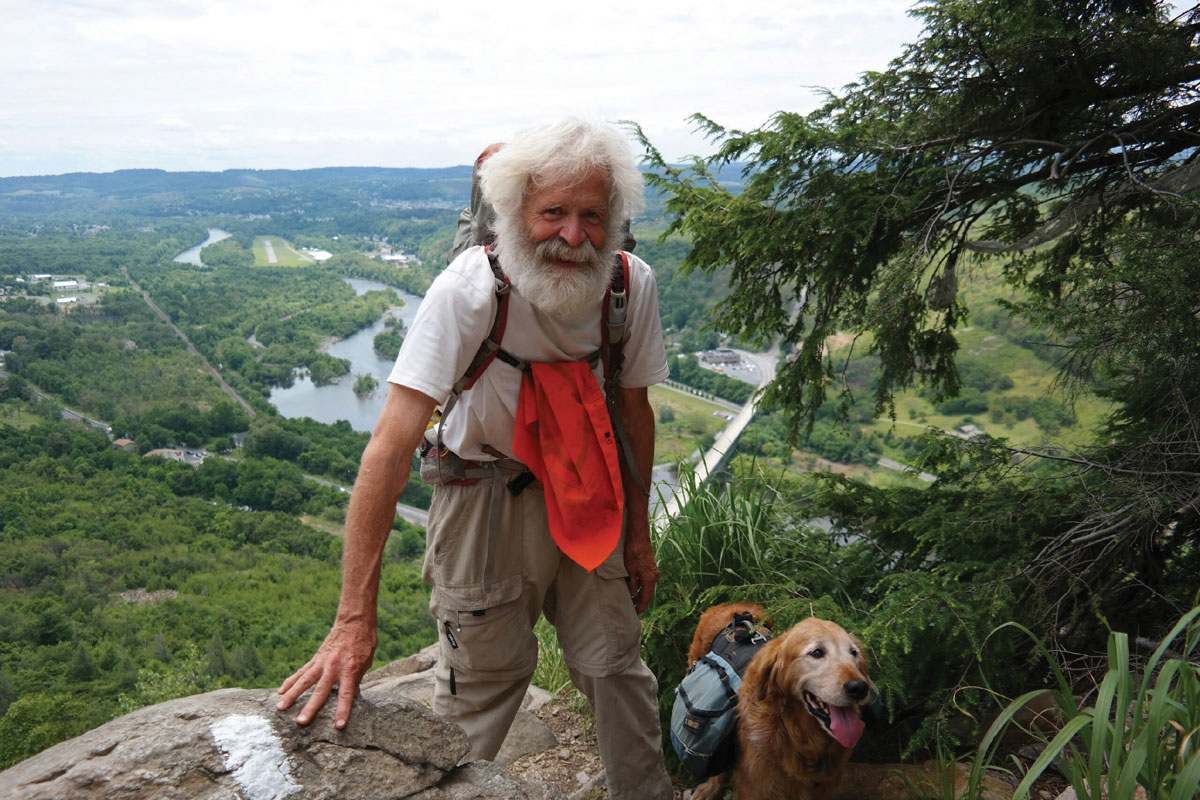
We met Soren at his house staying for my 60th birthday. I can’t wait to read his book!!!